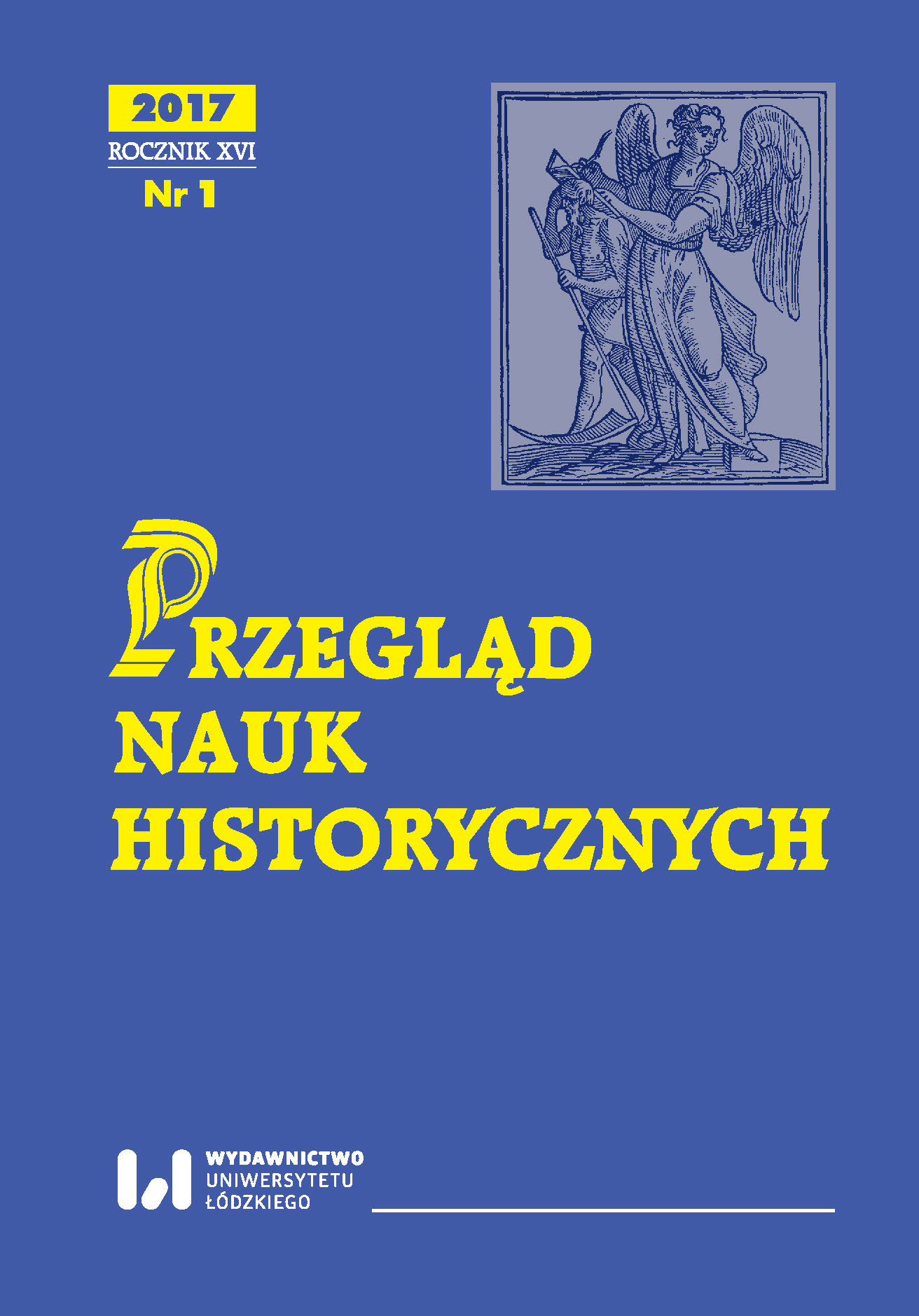Major Władysław Car – ofiara zbrodni katyńskiej (1895–1940)
Major Władysław Car – a victim of the Katyn
massacre (1895–1940)
Author(s): Witold JarnoSubject(s): History, Pre-WW I & WW I (1900 -1919), Interwar Period (1920 - 1939)
Published by: Wydawnictwo Uniwersytetu Łódzkiego
Keywords: major Władysław Car; Polish Army officers, Artillery of the Polish Army; history of Częstochowa; history of Tomaszów Mazowiecki; the Katyn massacre
Summary/Abstract: The article describes the life of Władysław Car – one of the thousands of victims of the Katyn massacre. He was born in 1895 in Warsaw, where he obtained a secondary school certificate. In 1915 he was evacuated by the Russian authorities to Kiev, where a year later he was called up to serve in the Russian army. In 1918, he served in the 1 Polish Corps in Russia, and after returning to the Polish lands he worked as a teacher in Tarczyn near Warsaw. In August 1919, he volunteered for the Polish Army and initially he served in unit trains in 7th Infantry Division, and in the years 1921–1924 in the Headquarters of District of Corps No. 5 in Krakow. In 1924 he was transferred to the 4th Regiment Heavy Artillery in Czestochowa (after 1935 his unit was moved to Tomaszow Mazowiecki) and after training he became a gunnery officer. In this regiment he served until 1938 and he has taken various stations (battery commander, quartermaster and adjutant). During his service in the 4 heavy artillery regiment he was promoted to captain. In October 1938, he was moved to the Anti-Gas Institute in Warsaw, where he worked until the outbreak of World War II. In September 1939 he was captured by the Russian and was placed in the camp in Kozelsk. In April 1940 – together with other Polish officers from this camp – he was executed in Katyn. Captain Władysław Car is one of several thousand Polish officers, about which memory slowly blurred out. In 2007 he was posthumously promoted to the rank of major. / Artykuł opisuje życie Władysława Cara – jednej z tysięcy ofiar zbrodni katyńskiej. Urodził się w 1895 r. w Warszawie, gdzie zdał maturę. W roku 1915 został ewakuowany przez władze rosyjskie do Kijowa, gdzie rok później powołano go do służby w armii rosyjskiej. W 1918 r. służył w 1 Korpusie Polskim w Rosji, a po powrocie na ziemie polskie pracował jako nauczyciel w Tarczynie koło Warszawy. W sierpniu 1919 r. wstąpił na ochotnika do Wojska Polskiego i początkowo służył w oddziałach taborowych 7 Dywizji Piechoty, a w latach 1921–1924 w Dowództwie Okręgu Korpusu nr V w Krakowie. W 1924 r. został z kolei przeniesiony do 4 Pułku Artylerii Ciężkiej w Częstochowie (w 1935 r. jego jednostka została przeniesiona do Tomaszowa Mazowieckiego) i po przeszkoleniu został oficerem artylerii. W pułku tym służył do 1938 r., zajmując w nim różne stanowiska (dowódca baterii, kwatermistrz i adiutant dowódcy dywizjonu). Podczas służby w 4 Pułku Artylerii Ciężkiej otrzymał awans na stopień kapitana. W październiku 1938 r. został przeniesiony do Instytutu Przeciwgazowego w Warszawie, gdzie pracował do wybuchu II wojny światowej. We wrześniu 1939 r. dostał się do niewoli rosyjskiej i został umieszczony w obozie w Kozielsku, a w kwietniu 1940 r. – wraz z innymi polskimi oficerami tego obozu – został zamordowany w Katyniu. Jest jednym z kilku tysięcy polskich oficerów, o których pamięć powoli się zaciera. Kapitan Władysław Car w 2007 r. został pośmiertnie awansowany na stopień majora.
Journal: Przegląd Nauk Historycznych
- Issue Year: 16/2017
- Issue No: 1
- Page Range: 193-216
- Page Count: 24
- Language: Polish

